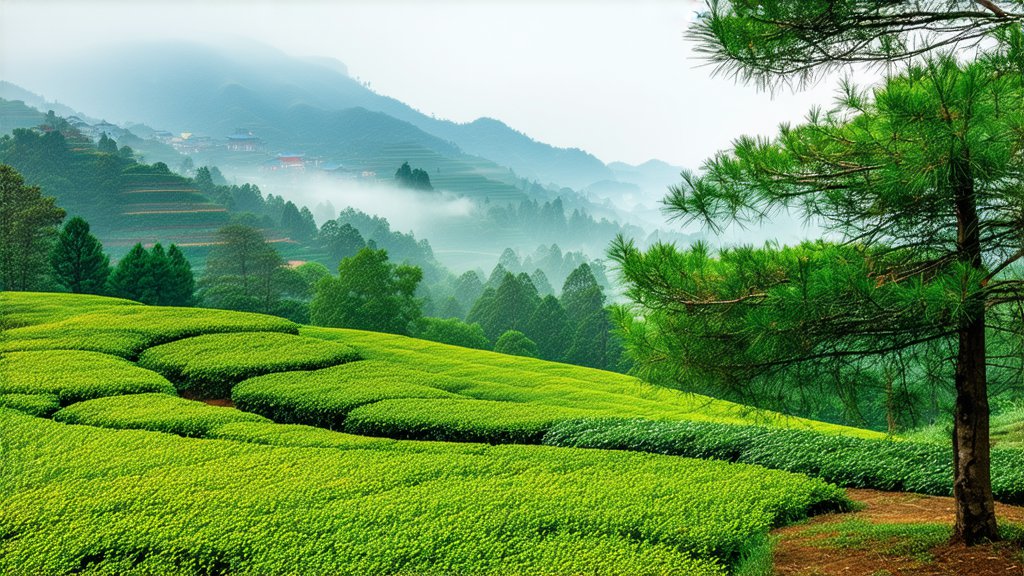
Keemun black tea, known as "Qi Hong" in Chinese, is a type of black tea that hails from the Anhui province of China. It is one of the most renowned black teas in the world, celebrated for its unique flavor profile and rich history. This article aims to provide an in-depth exploration of Keemun black tea, covering its history, varieties, production process, and the art of tasting.
History of Keemun Black Tea
The history of Keemun black tea dates back to the 19th century. It was in the year 1875 when a Chinese tea merchant named Yu Qianshan, from the town of Qimen in Anhui province, accidentally discovered the process of making black tea. Yu Qianshan was exporting green tea to Europe, but due to a delay in shipping, the tea leaves began to ferment. Instead of discarding the fermented leaves, he decided to process them and found that the resulting tea had a distinct and appealing flavor. This marked the birth of Keemun black tea.
Since then, Keemun black tea has gained international recognition and has been a favorite among tea connoisseurs worldwide. It was once referred to as the "Queen of Black Teas" by Queen Victoria herself, who was captivated by its aroma and taste.
Varieties of Keemun Black Tea
Keemun black tea is categorized into several grades, each with its unique characteristics. The main varieties include:
-
Keemun Mao Feng: This is the highest grade of Keemun black tea, known for its delicate, needle-like leaves. It has a light, sweet flavor with a hint of fruitiness.
-
Keemun Hao Ya: This variety is characterized by its twisted, wiry leaves. It offers a more robust flavor profile with a slightly smoky undertone.
-
Keemun Hao Jie: With larger leaves than the Hao Ya, Hao Jie has a more mellow and smooth taste, often with a subtle sweetness.
-
Keemun Congou: This is a lower grade of Keemun black tea, known for its broken leaves and a stronger, more robust flavor.
-
Keemun Souchong: The lowest grade, Souchong is made from the smallest leaves and tea dust. It has a bold, full-bodied taste with a distinct smoky aroma.
Crafting the Perfect Cup of Keemun Black Tea
The production process of Keemun black tea is a meticulous art that involves several steps:
-
Picking: The tea leaves are handpicked, usually in the spring, when they are at their peak freshness and nutrient content. The top two leaves and a bud are plucked, ensuring the highest quality.
-
Withering: The freshly picked leaves are spread out to wither, a process that reduces their moisture content and softens the leaves, preparing them for the next steps.
-
Rolling: The withered leaves are rolled, either by hand or machine, to break down the cell walls and release the enzymes necessary for oxidation.
-
Oxidation (Fermentation): This is the key step that differentiates black tea from other types. The rolled leaves are left to oxidize, which turns them from green to a coppery or reddish-brown color and develops the characteristic flavor of black tea.
-
Firing: The oxidized leaves are then fired to stop the oxidation process and dry the leaves. This step also helps to fix the tea's aroma and flavor.
-
Sorting and Grading: Finally, the dried leaves are sorted by size and grade, ensuring a consistent quality in each batch.
Tasting Keemun Black Tea
Tasting Keemun black tea is an experience that engages all the senses. Here are some pointers to guide you through the process:
-
Aroma: Before brewing, take a moment to appreciate the dry leaf aroma. Keemun black tea is known for its sweet, floral, and sometimes fruity notes.
-
Brewing: Use fresh, cold water that has been brought to a boil. The water temperature is crucial; for Keemun, aim for 95°C to 100°C (203°F to 212°F). Allow the tea to steep for 3 to 5 minutes, depending on your preference for strength.
-
Color: Observe the color of the brewed tea. A good Keemun should have a bright, reddish-brown hue.
-
Taste: Sip the tea and let it linger on your palate. Keemun black tea